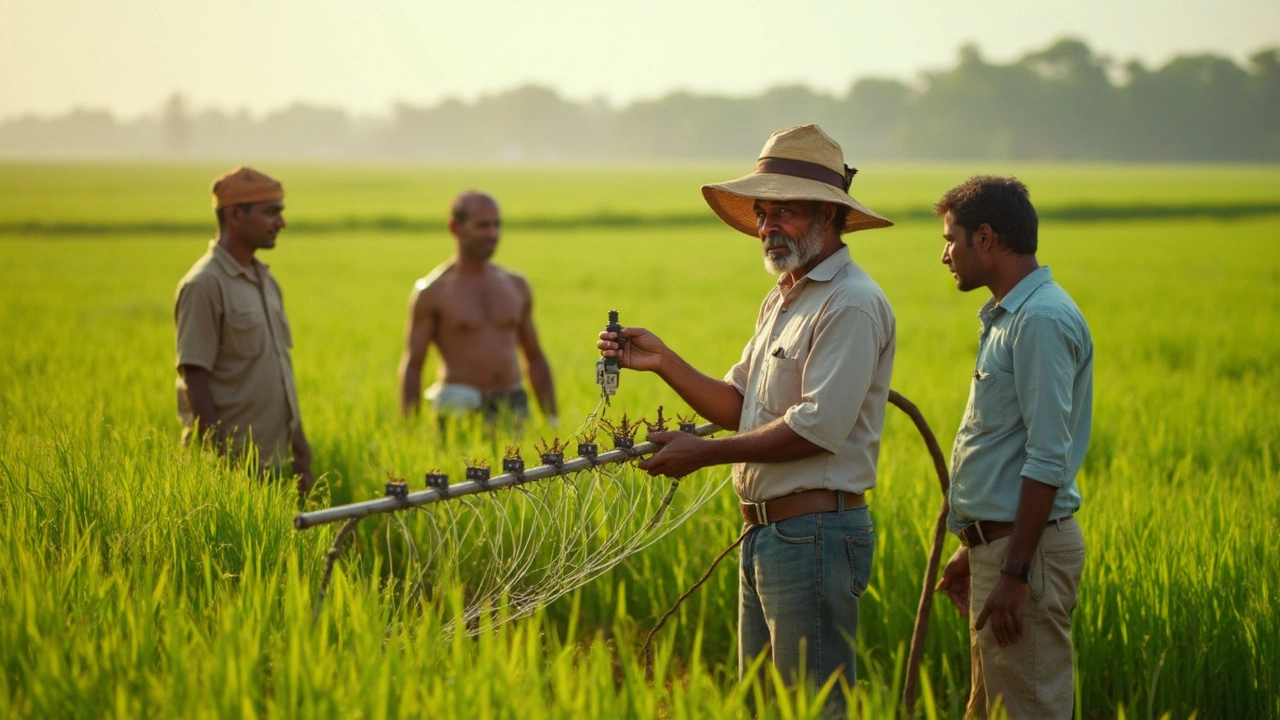Most farmers still shy away from drip irrigation despite its efficiency. This article delves into the challenges and difficulties farmers face with adopting this water-saving technique. From understanding initial costs to the nuances of installation, get insights into why drip irrigation remains underutilized in agriculture.
Water Conservation in Indian Gardens: Smart Ways to Save Water and Grow Healthier Plants
When it comes to water conservation, the practice of using water efficiently to reduce waste and ensure long-term availability. Also known as water saving, it's not just about turning off the tap—it's about working smarter with what you have, especially in a country where monsoons are unpredictable and groundwater is dropping fast. In Indian homes and farms, water isn't just a resource—it's the lifeline of every plant, every crop, every garden. And if you're tired of seeing your plants wilt in the heat or paying high water bills, you're not alone.
Drip irrigation, a method that delivers water directly to plant roots through tubes and emitters. Also known as micro-irrigation, it's one of the most effective tools for water conservation. But as many gardeners have found, clogged emitters and uneven flow can ruin its efficiency. Fixing those issues isn't hard—it just takes a little attention. Then there's garden soil improvement, the process of adding organic matter and amendments to make soil hold water better and drain well. Also known as soil conditioning, healthy soil acts like a sponge: it soaks up rain, holds moisture longer, and lets roots breathe. Adding compost, leaf mold, or perlite doesn't just loosen clay—it turns dry, hard ground into a water-retaining powerhouse.
And let’s not forget composting, turning kitchen scraps and yard waste into nutrient-rich soil that reduces the need for watering and fertilizers. Also known as organic recycling, compost doesn’t just feed your plants—it helps them survive dry spells. A garden with good compost needs less water because the soil doesn’t dry out as fast. Combine that with drought-resistant plants, species that thrive on minimal water once established. Also known as xeriscaping plants, like jasmine, marigold, or native vegetables such as amaranth and cluster beans, and you’ve got a garden that stays green even when the taps run dry.
You don’t need fancy tech or big budgets to save water. It starts with observation: noticing where water pools, where it runs off, which plants droop first. It’s about choosing the right tools—like drip lines instead of hoses—and the right materials—like mulch to cover soil and slow evaporation. It’s about understanding that a well-composted bed needs half the water of a bare, compacted one. And it’s about picking plants that belong here, not ones that demand constant care.
Below, you’ll find real guides from Indian gardeners who’ve tackled these issues—how to fix leaky drip systems, how to turn heavy clay into workable soil, which plants survive without daily watering, and how composting cuts your water use by 30% or more. No fluff. No theory. Just what works in Indian heat, on balconies, in small farms, and behind city homes.
